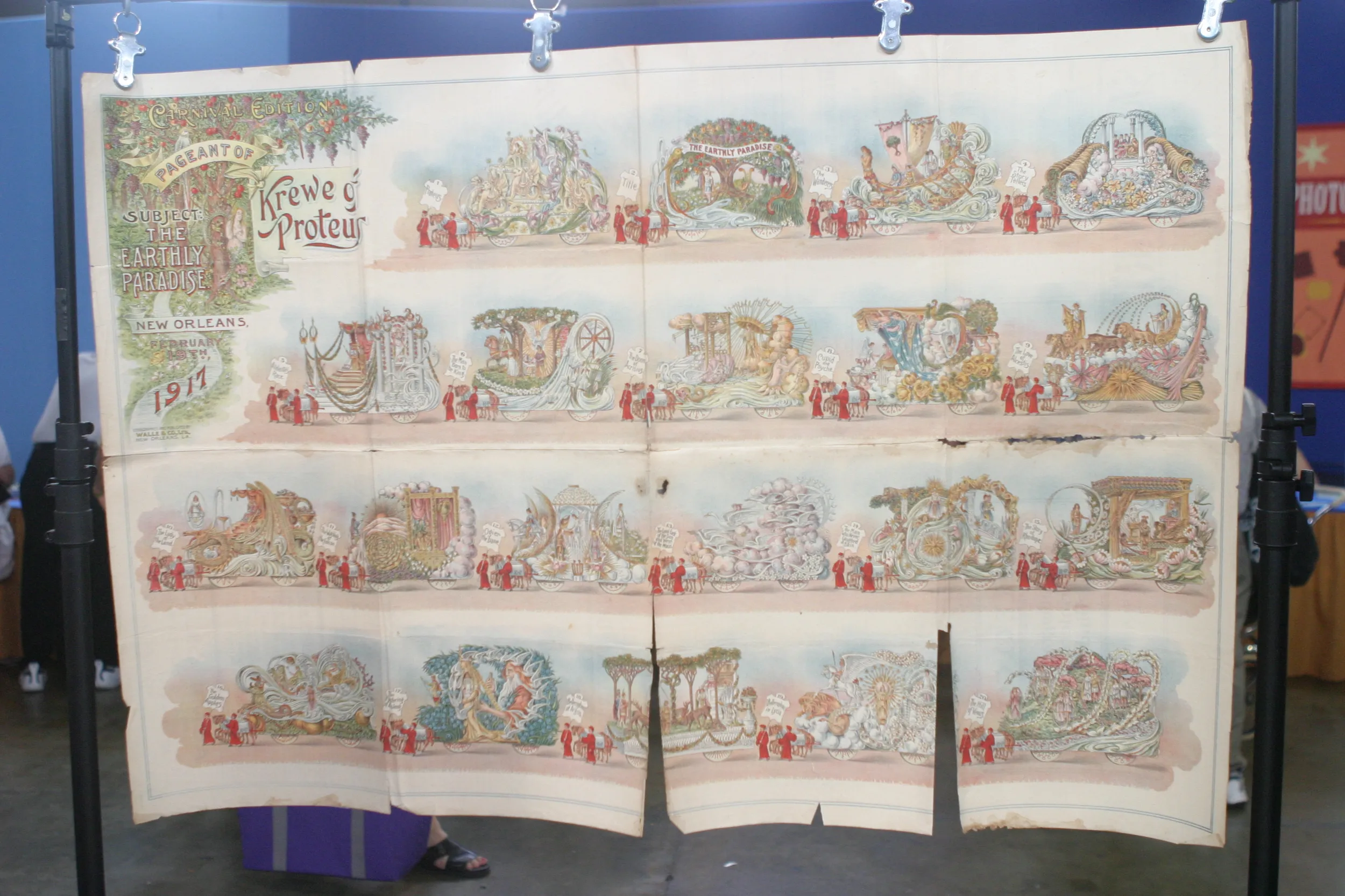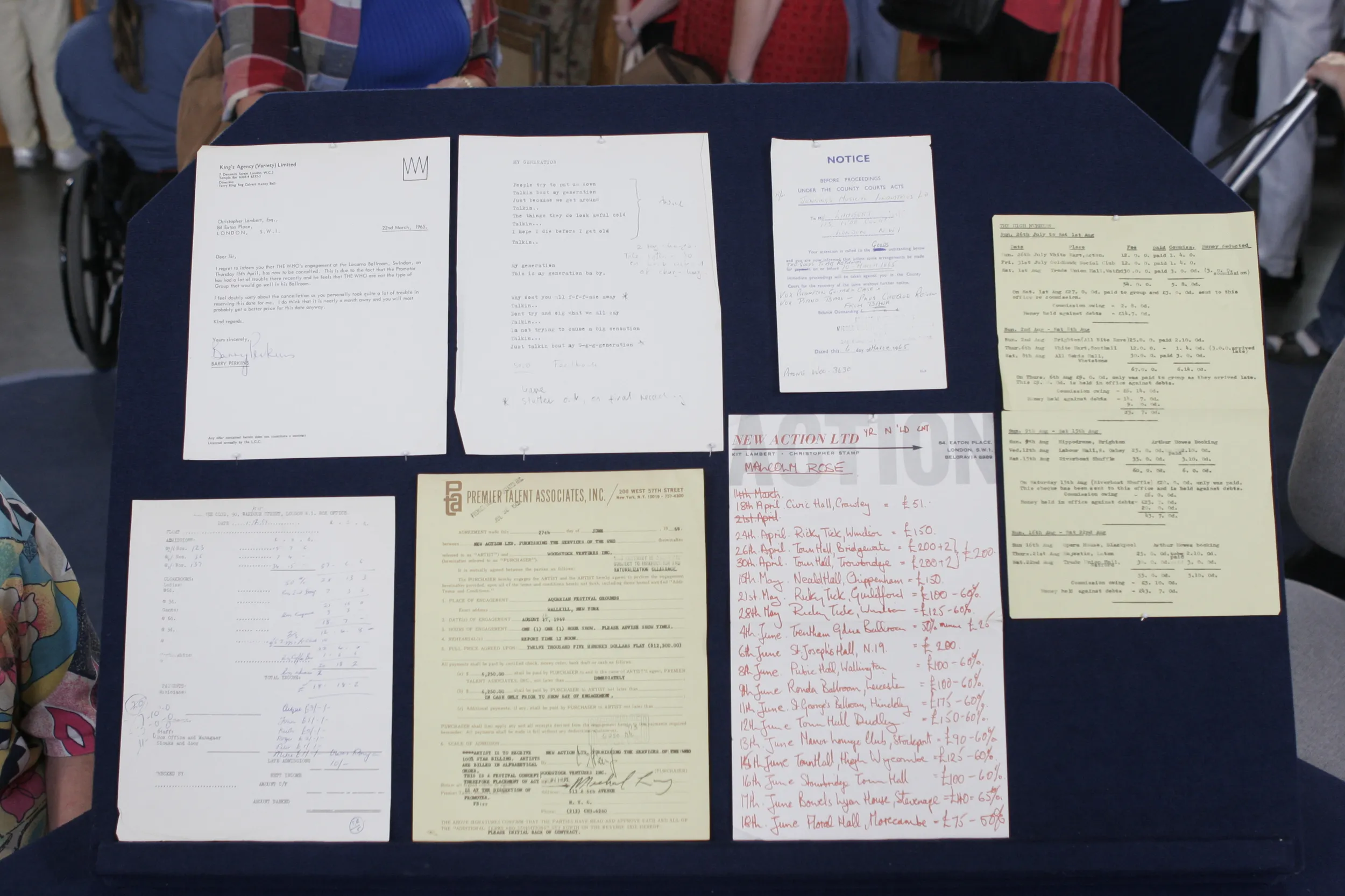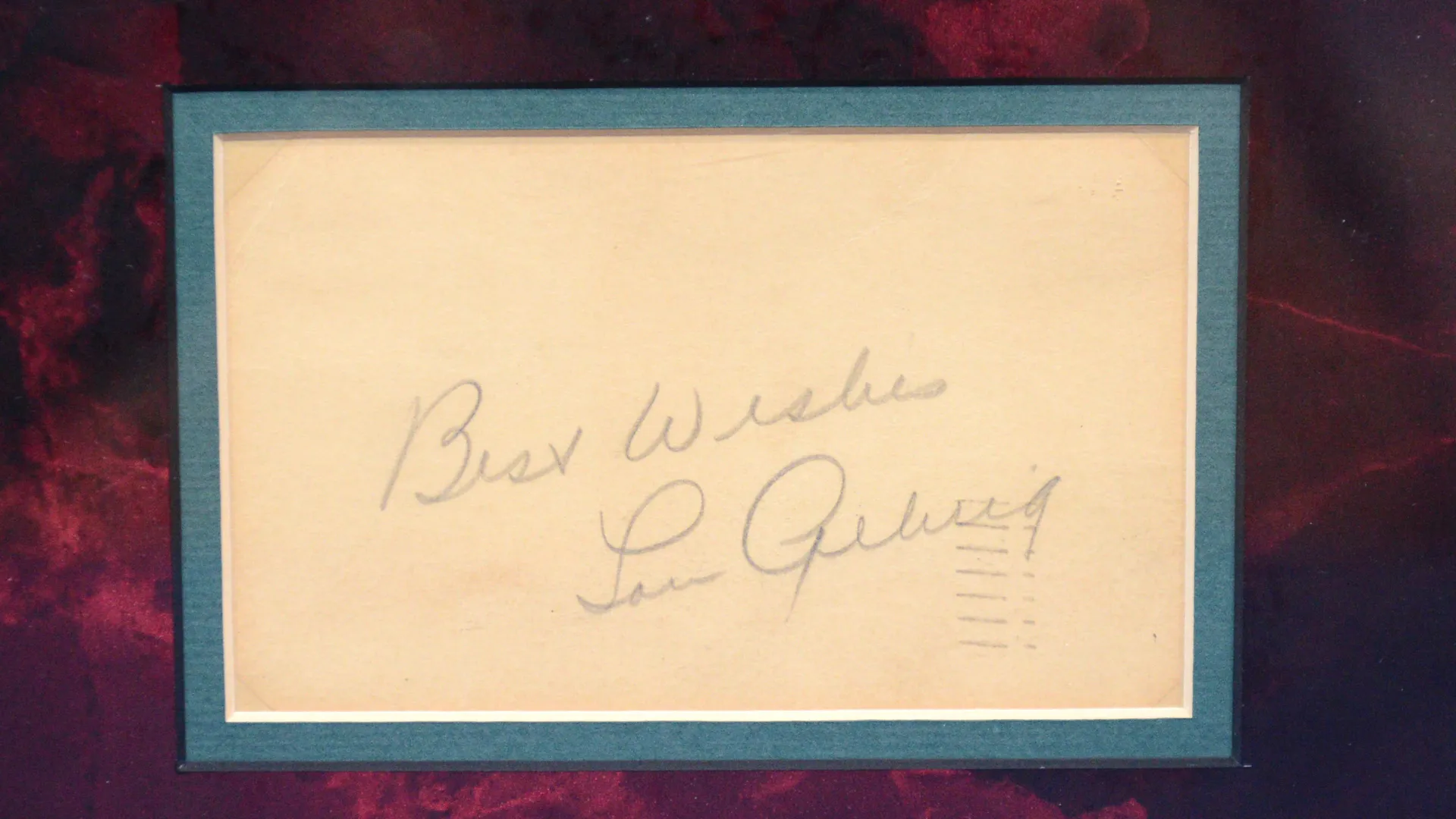GUEST: I have a postcard that belonged to my husband's grandfather, and it is the autograph of Lou Gehrig.
APPRAISER: And what could you remember about receiving the postcard?
GUEST: It was in a scrapbook that his grandmother gave us, and you can see there's kind of glue marks on there. And I knew immediately I had to get it out of the paper because it had acid in the paper.
APPRAISER: So looking at this side of the postcard, we see the glue residue, and then we also see the postmark there.
GUEST: Right.
APPRAISER: From St. Petersburg, Florida, March 20, 1936.
GUEST: Yes.
APPRAISER: Let's take a look now at the signature. So first thing is, it is authentic.
GUEST: Okay.
APPRAISER: There's so many different factors in collecting autographs now. The collectors have insisted on not only authenticity, but also provenance. And with every autograph, there's a story. And what was great about the postcard is it tells us that this was mailed from spring training for the New York Yankees in 1936. Then there's the condition. The condition is excellent. It's a graphite signature that's really strong.
GUEST: Good.
APPRAISER: Then we look at Lou Gehrig in 1936. He was in the prime of his career. He was the league MVP, they won the World Series, he made the all-star team for the fourth straight year, he led the league in home runs with 49, with runs scored with 167. It was absolutely one of his best seasons of his career. Why this is important is because there's different levels of signatures. We have players who sign during their career. There's players who sign their whole lives. There's also signatures from players from an offseason. There's all those different factors that factor in. What's so great about this example is that 1936, being the prime of his career, makes it about as good as they get for a Gehrig signature. The other thing that I like is how you've taken the time to frame it, exposing the back. Anything else you know about Lou Gehrig?
GUEST: Of course Lou Gehrig's disease, ALS. Everybody associates that with him.
APPRAISER: Which he was diagnosed on June 19, 1939, on his birthday. Well, as we talked about it, great example from a great season in his career. So we would put an estimate on this, a retail value of $10,000.
(laughs)
GUEST: I'm stunned. I thought maybe $800 would be lucky. $10,000?
APPRAISER: Yup.














